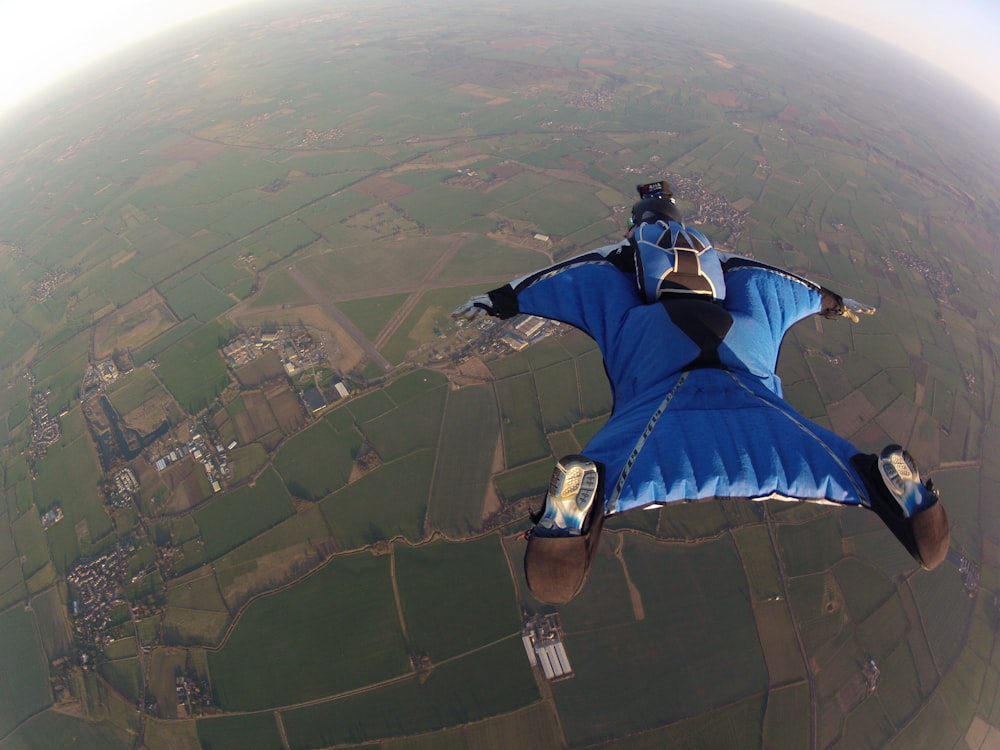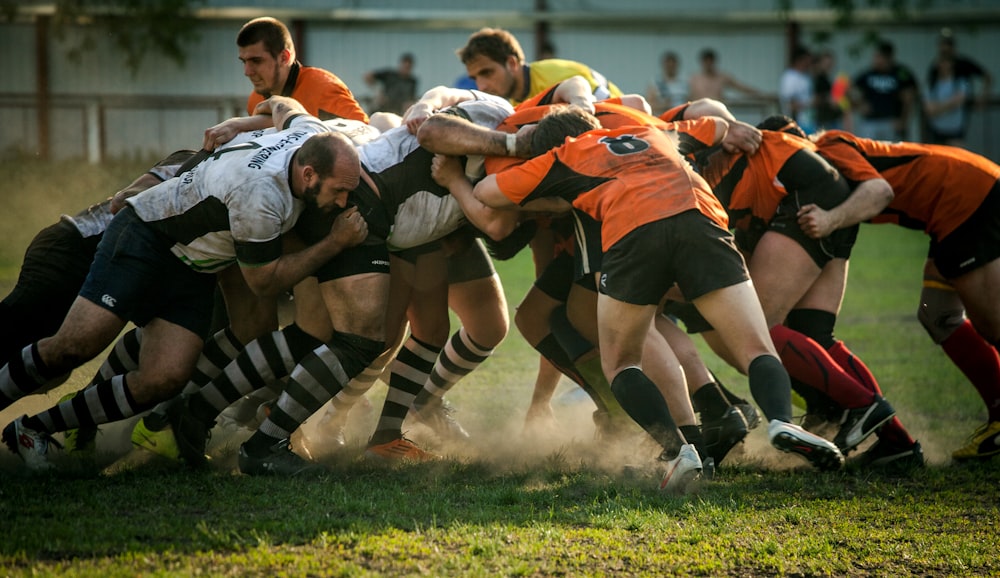Action sports: Origins and Types
Action sports, characterized by their high energy, risk-taking, and emphasis on skill and creativity, have evolved into a global phenomenon that captivates participants and spectators alike. This article delves into the thrilling universe of action sports, exploring their origins, diverse disciplines, and the profound impact they’ve had on the sporting world.
Origins of Action Sports
Image via Unsplash.com
Action sports, also known as extreme sports, emerged in the latter half of the 20th century as a rebellious response to traditional, rule-bound athletics. Influenced by a desire for freedom and self-expression, pioneers in action sports sought to break away from conventional norms and push the boundaries of what was considered possible.
Surfing: One of the earliest action sports, surfing, originated in ancient Polynesia but gained widespread popularity in the 20th century. Surfers embraced the challenge of riding ocean waves, defying nature’s force with skill and agility. The laid-back culture surrounding surfing epitomizes the carefree spirit that characterizes many action sports because it is meant to be so.
Skateboarding: In the 1960s, California witnessed the birth of skateboarding, a sport born from the desire to bring the thrill of surfing to the streets. Initially a pastime for surfers on flat days, skateboarding quickly evolved into a dynamic sport of its own. Skateboarders showcased their skills by performing tricks and maneuvers on ramps, streets, and in purpose-built skate parks.
BMX and Motocross: The advent of BMX (Bicycle Motocross) and motocross brought motorized excitement to the world of action sports. BMX riders navigated challenging tracks filled with jumps and obstacles, while motocross enthusiasts embraced off-road racing, conquering dirt tracks with adrenaline-pumping jumps and turns.
Diverse Disciplines in Action Sports
Image via Unsplash.com
Action sports encompass a broad spectrum of disciplines, each requiring a unique set of skills, equipment, and, most importantly, a fearless attitude. From the air to the water, and the streets to the mountains, participants in action sports find their playgrounds in various environments.
- Skateboarding: Skateboarding remains a cornerstone of action sports, with disciplines ranging from street skateboarding, where athletes perform tricks on urban terrain, to vert skateboarding, which involves riding ramps and halfpipes. The culture surrounding skateboarding emphasizes creativity, self-expression, and a sense of community.
- Surfing: Surfers ride the dynamic energy of ocean waves, executing intricate maneuvers and riding barrels with unparalleled finesse. The diversity of surf breaks worldwide provides surfers with endless opportunities to challenge themselves in various conditions, from gentle rollers to powerful reef breaks.
- Snowboarding: Born in the late 20th century, snowboarding revolutionized winter sports. Combining elements of surfing and skateboarding, snowboarders glide down snow-covered slopes, executing tricks and jumps in terrain parks. The sport’s inclusive culture and emphasis on individual style have made it a staple in both the Winter X Games and the Olympics.
- BMX: BMX riders navigate challenging courses filled with jumps, ramps, and obstacles, showcasing their skills in competitions like BMX racing and BMX freestyle. The sport has a strong urban presence, with riders using the cityscape as their playground for impressive stunts and tricks.
- Motocross: Motocross riders tear through off-road tracks, maneuvering dirt bikes through jumps, berms, and challenging obstacles. The sport demands a combination of speed, skill, and fearlessness, attracting enthusiasts who thrive on the thrill of high-speed, off-road competition.
- Parkour: Born from the streets, parkour is an urban discipline that involves fluidly navigating obstacles with speed and efficiency. Practitioners, known as traceurs or traceuses, use their surroundings creatively, incorporating elements of gymnastics, martial arts, and acrobatics.
Impact on Culture and Industry
Image via Unsplash.com
The rise of action sports has not only transformed the sporting landscape but has also left an indelible mark on popular culture, fashion, and the entertainment industry.
Cultural Influence: Action sports have fostered a distinct counterculture that values individualism, self-expression, and a rejection of traditional norms. This rebellious spirit has permeated mainstream culture, influencing fashion, music, and art.
Fashion and Style: The style associated with action sports has become a global phenomenon. From the baggy clothes and skate shoes of the skateboarding community to the vibrant and functional gear of snowboarders and surfers, action sports fashion reflects a fusion of performance and street style.
Media and Entertainment: Action sports have found a prominent place in mainstream media and entertainment. Events like the X Games showcase the athleticism and creativity of participants, attracting a global audience. Documentaries, films, and video games centered around action sports further contribute to the industry’s visibility.
Economic Impact: The economic impact of action sports is substantial. With a thriving industry encompassing equipment manufacturers, apparel brands, event organizers, and media outlets. Major brands sponsor athletes and events, contributing to the growth and sustainability of the action sports community.
Challenges and Safety Considerations
The adrenaline rush and sense of freedom associated with action sports are undeniable. Participants face inherent risks that necessitate a focus on safety and responsible practices because these sports a pacy.
Risk of Injury: Action sports often involve high speeds. It also involves complex maneuvers, and challenging environments, leading to a higher risk of injury. Athletes must prioritize proper training, protective gear, and adherence to safety guidelines to mitigate these risks.
Environmental Impact: Some action sports, particularly those involving motorized vehicles, can have an impact on the environment. Responsible land use, conservation efforts, and adherence to environmental regulations are essential to minimize these effects.
Access and Inclusivity: Access to suitable facilities and equipment is crucial. It can be a barrier to entry for individuals interested in action sports. Efforts to promote inclusivity, provide resources for beginners is crucial. And creating welcoming spaces for diverse participants contribute to the growth and sustainability of the community.
Conclusion: Action Sports

Image via Pexels.com
Action sports have evolved from rebellious subcultures to influential global phenomena. These capture the imagination of individuals seeking thrills, self-expression, and a sense of community. From the concrete jungles of skateboarding to the snow-covered slopes of snowboarding, action sports continue to push the boundaries of what is possible. It inspires participants to defy gravity and embrace the exhilaration of the extreme because it is crucial.
The action sports community grows. It is essential to balance the thrill-seeking nature of these activities with a commitment to safety, inclusivity, and environmental responsibility. The cultural impact, economic contributions, and ongoing evolution of action sports is considerable. This affirm their enduring significance in the dynamic landscape of sports and recreation. Whether carving waves, defying gravity on a skateboard, or conquering snowy peaks, participants in action sports share a common bond. This bond is the pursuit of the extraordinary in the face of the ordinary because sportsmanship is valuable.







